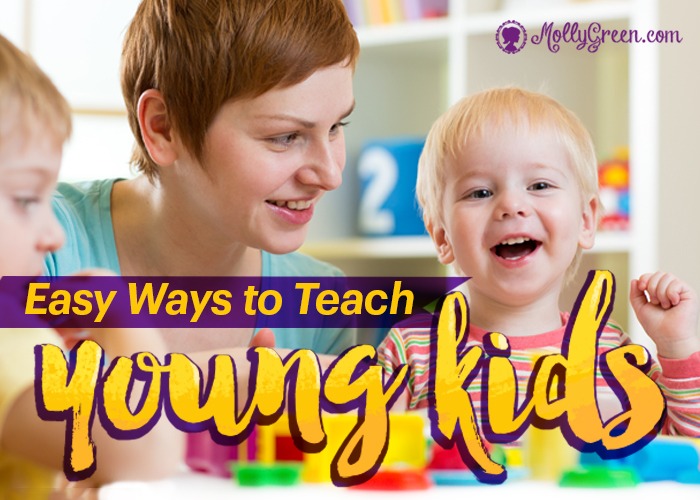By Ashley Allgood
I’ve homeschooled my kids for about sixteen years now. Everyone who knows us knows that we homeschool, so I’m often approached by families thinking about homeschooling. I love seeing the excitement in their eyes as I listen to them talk about their plans, but I also feel conflicted inside. Too many new homeschoolers still look at learning from a public school point of view.
One mother I was talking to online was excited about homeschooling her three-year-old son. She had friends sending their kids off to preschool, and she bought a curriculum package at a homeschool fair to teach her son at home. I quietly cringed as she told me how it only cost a few hundred dollars. I stayed positive though and told her I had heard good things about the curriculum and I was sure they would have fun learning together.
But, months later I wasn’t surprised to see this poor mother was burned out, her son was burned out and she was having so many doubts about homeschooling. She said she had heard homeschoolers learned quickly, had fun together and were close as a family. She said her son cried every morning when it was time for lessons, she cried along with him, her husband wasn’t happy since they were not happy and he wanted to send her son to school. I tried my best to explain how I handled the early years of my kids learning and suggested she try them. Thankfully, changing her method of teaching made everyone happy and she is still homeschooling today.
This is a common mistake that many new schoolers face and I often remind them that the early years of homeschooling are meant to be fun, relaxed and most of all, a way for kids to learn to love learning. You don’t need a fancy preschool curriculum and you don’t need to force your three or four-year-old old to sit at a table and do school work for so many hours a day.
The early years of homeschooling are about learning the basics such as shapes, numbers, letters and some sight words. This is something kids can learn throughout their daily life at home without paper and pencil. Here are some examples:
• Serve food in different shapes
• Find shapes around the room: a door is a rectangle, a window is a square, a clock is a circle
• Draw shapes on paper, outside on the sidewalk with chalk
• Look at a book about shapes
• Paint shapes with finger paint
• Buy blocks and play with them while talking about the shapes
Numbers:
• Count as you walk, go upstairs, skip and so on
• Play hopscotch
• Let your child help you cook and count as you make the meal. Count the scoops of flour, how many times you stir, count how many servings you will need.
• Write numbers with chalk, water or in dirt
• Draw numbers and turn them into faces or people
• Get a calendar and mark off days or countdown to a special event
• Play board games and count as you move a marker
Letters:
• Show your child letters are everywhere in our world and that they mean something
• Teach your child to write their name and say the letters out loud
• Write letters outside with chalk, in dirt or sand, write with water on the driveway
• Buy magnetic letters for the refrigerator and put them together to form words
• Read books about the alphabet
• Read a child-friendly picture dictionary together
• Sing the alphabet song together as you write the alphabet
• Watch child-friendly alphabet videos
• Make personalized alphabet cards. I did this for my kids using family photos. You can also do this with photo books you can create online.
• Cut food into the shape of letters
• Each day is a Letter Of The Day: throughout the day do things associated with that letter.
Sight Words:
• Label household objects using index cards – put a card that says “Door” on your child’s door and so on.
• Make personalized sight word cards using pictures of people and things your kids knows. For example, if grandma is called Mimi, cut out a picture of Mimi on an index card and write Mimi.
• Flash cards of basic sight words
• Write words using paint, water, sand, dirt or even basic pencil and paper
• Hopscotch with sight words – instead of numbers write words and say the words as you hop onto it
• Read out loud to your child
When my kids were young I never forced them to do sit-down work. I encouraged it and even bought preschool workbooks, or printed out preschool worksheets, but I worked more at making learning fun. If they would rather paint or play outside, then go for it.
Our kids will only be kids for a short time, so it’s important to enjoy them being little. It is ok if your child isn’t learning the same thing as your local preschool teaches. If your son wants to learn about dinosaurs, then go for it, if your daughter wants to learn about dogs, then teach her about dogs. This is the time when your child is a sponge, so take advantage of that and have fun.
What does your preschool curriculum look like?
Ashley Allgood is a Christian wife married twenty-one years to Michael. They have three children aged twenty, sixteen and fourteen. They live in Georgia where they homeschool their children. Ashley is a distributor for Young Living oils. Ashley has always loved writing and story-telling. Read her blog Thoughts Of Faith – mythoughtsoffaith.blogspot.com






Omg, thank you so much for this! I have been struggling with where to start with homeschooling my preschooler, and now I realize that I’ve been doing it all along.